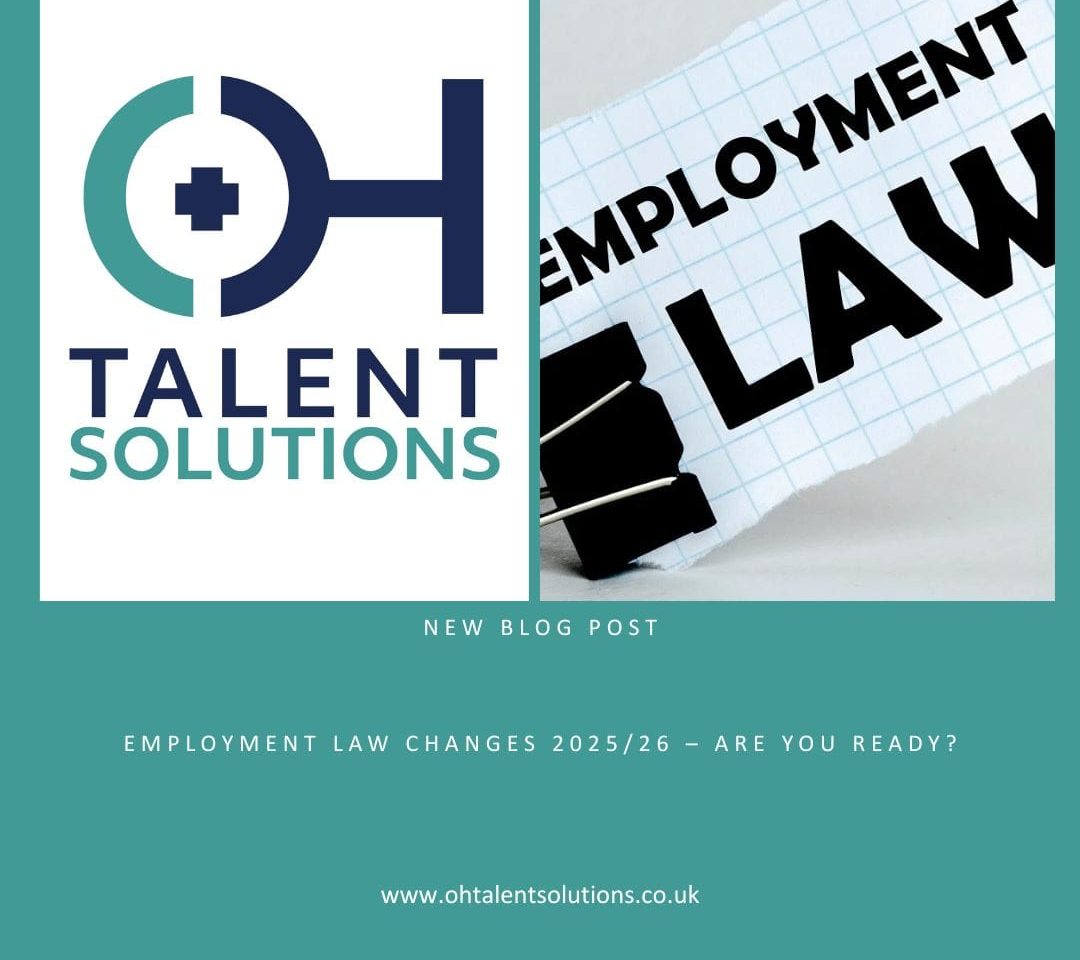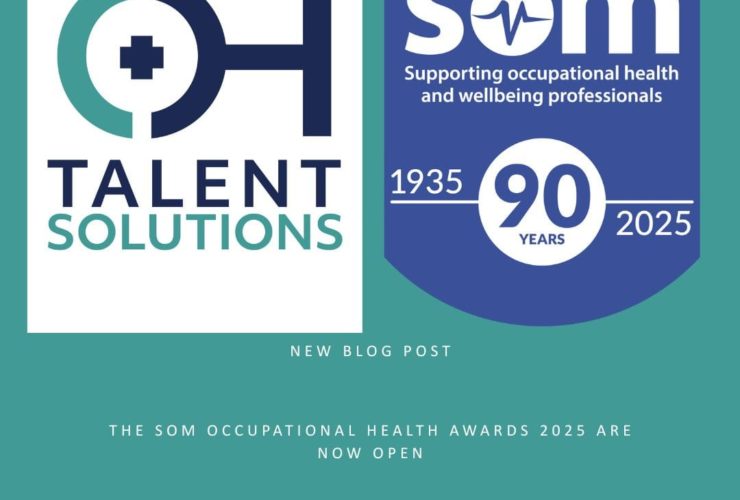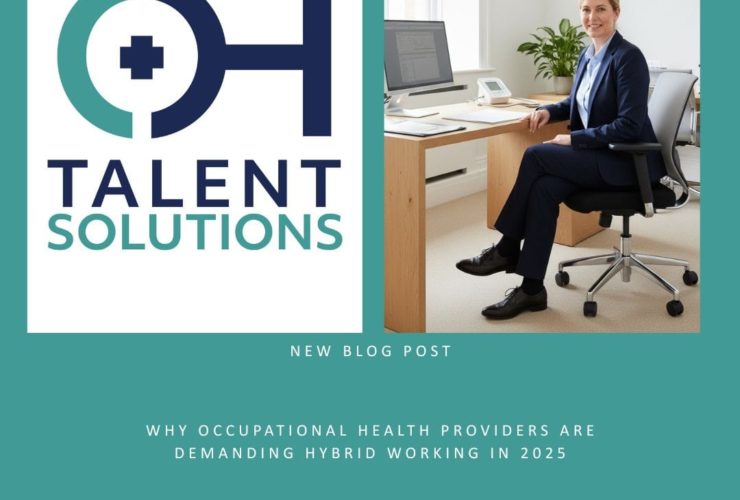Employment Law Changes 2025/26 – Are You Ready?
🚨 A major overhaul of UK employment law is coming. 🚨
The proposed Employment Rights Bill represents one of the most significant shifts in workplace legislation for more than a decade — with wide-reaching consequences for employers, HR professionals, and occupational health providers.
The reforms aim to modernise employment law, strengthen worker protections, and promote fairness, flexibility, and wellbeing in the workplace. But with so many changes on the horizon, preparation will be key to staying compliant and reducing risk.
What’s Changing in 2025/26
According to GOV.UK and People Management, the Employment Rights Bill will bring a phased rollout of measures starting from 2025, continuing into 2026 and beyond.
Here are some of the headline changes:
| Reform Area | Key Changes |
|---|---|
| Unfair Dismissal | The two-year qualifying period for unfair dismissal claims is expected to be reduced, giving earlier protection to employees. (Travers Smith) |
| Day-One Rights | Employees will have access to more rights from day one of employment, including the right to request flexible working. (CIPD) |
| Family and Carers’ Leave | Extended maternity, paternity, adoption, and carers’ leave entitlements, along with improved redundancy protections during family leave. (People Management) |
| Statutory Sick Pay | Removal of lower earnings thresholds and waiting days, expanding eligibility. (People Management) |
| Zero-Hours and Predictable Work | Workers on variable contracts will gain the right to request more predictable working hours after a qualifying period. (Fisher Phillips) |
| Pay Transparency and Equality | Employers may be required to include salary ranges in job adverts and respond to pay data requests to address gender and ethnicity pay gaps. (Lewis Silkin) |
| Harassment and Prevention Duties | Stronger employer obligations to take “all reasonable steps” to prevent workplace harassment. (Lewis Silkin) |
| Union and Collective Rights | Potential reforms to collective bargaining and redundancy consultation rules. (Skadden) |
The Impact on Employers
1. Increased Legal Exposure
With more rights available from day one and a reduced qualifying period for unfair dismissal, employers will face:
Higher risks of tribunal claims.
Tighter standards for dismissals, redundancies, and policy enforcement.
Greater scrutiny of grievance handling and workplace culture.
Covington & Burling notes that employers should prepare for more group or collective claims as workers become more empowered to challenge unfair practices.
2. Policy and Contract Overhaul
Employers will need to review:
Employment contracts, ensuring clarity around probation, notice, and flexibility.
Handbooks and HR policies, including flexible working, sickness, equality, and parental leave.
Job adverts, to align with pay transparency and non-discrimination standards.
3. Operational and Cultural Shifts
Compliance isn’t just about documents — it’s about culture. Employers will need to:
Train line managers to handle flexible working and carers’ leave requests fairly.
Build wellbeing and inclusion into core HR strategies.
Communicate policy changes clearly to staff to prevent misunderstandings.
Lewis Silkin highlights that proactive, transparent communication will be essential to demonstrate compliance and foster trust.
4. Financial and Administrative Pressure
Changes such as broader sick pay coverage and expanded leave entitlements could increase employment costs.
SMEs, in particular, may feel the impact of:
Additional administrative load.
The need for better tracking and documentation.
More demand for HR support, audits, and training.
The Impact on Occupational Health Providers
Occupational Health (OH) professionals are uniquely positioned at the intersection of health, employment law, and workplace risk — and these changes will directly shape their role in supporting employers.
1. Rising Demand for OH Expertise
As CIPD and People Management note, wellbeing and flexibility are central to the new reforms.
This means OH providers will see increased demand for:
Advice on return-to-work and absence management.
Support with reasonable adjustments and capability assessments.
Guidance on workplace stress, mental health, and burnout prevention.
Employers will lean on OH specialists for compliant, evidence-based recommendations when managing attendance, performance, or medical capability.
2. More Complex Absence and Health Management
With broader eligibility for statutory sick pay and more protections for those with caring responsibilities, OH teams will need:
Stronger triage and documentation systems.
Clear referral pathways between HR, management, and clinicians.
Enhanced training on confidentiality and data protection.
More referrals and tighter legal oversight will make timely, defensible reporting critical.
3. Integration with HR and Compliance
OH providers will need to work even more closely with HR, legal, and line management teams to ensure joined-up compliance.
That includes:
Updating referral protocols and service level agreements (SLAs).
Providing clear, actionable medical advice that supports fair decisions.
Maintaining robust audit trails for every assessment and recommendation.
4. Opportunities for Innovation and Growth
These legislative shifts also open doors for OH businesses that can demonstrate:
Deep understanding of employment law implications.
Expertise in proactive wellbeing and risk prevention.
Ability to support employers through training, reporting, and strategic advice.
Forward-thinking providers can position themselves as strategic partners — helping employers not just to comply, but to thrive under the new framework.
How to Prepare Now
For Employers:
Audit current contracts, policies, and procedures.
Train HR teams and managers on the new rules.
Update job adverts and recruitment materials for transparency.
Review absence, wellbeing, and harassment prevention frameworks.
Establish stronger collaboration with occupational health partners.
For Occupational Health Providers:
Align services with new legislative areas (sick pay, flexible working, family leave).
Strengthen data protection and documentation standards.
Develop employer training modules and compliance support packages.
Communicate upcoming changes to clients to position your services as essential.
Final Thoughts
The 2025/26 Employment Law changes mark the beginning of a more modern, fair, and health-focused working landscape.
For employers, they bring new obligations — and potential risks if not managed proactively.
For occupational health providers, they present an opportunity to deepen partnerships, demonstrate expertise, and play a pivotal role in shaping healthy, compliant workplaces.
Preparation now will mean smoother transitions, fewer surprises, and a more resilient workforce when the new laws take effect.




